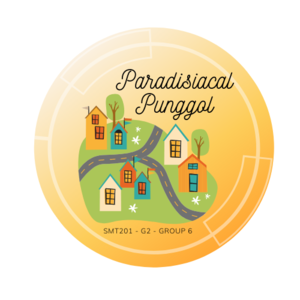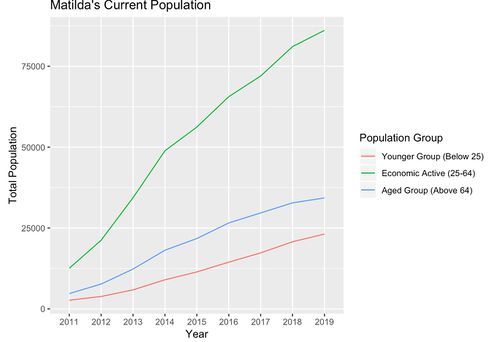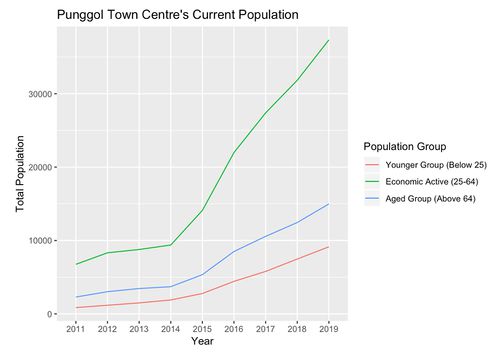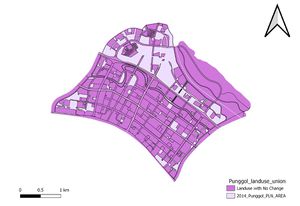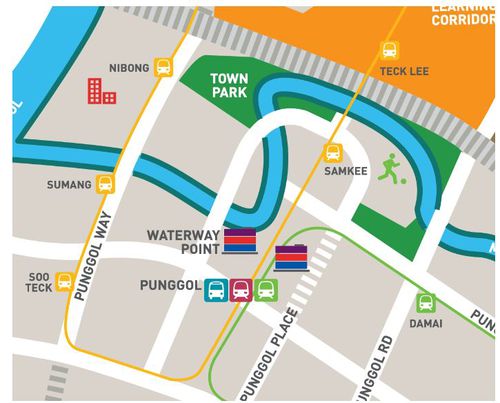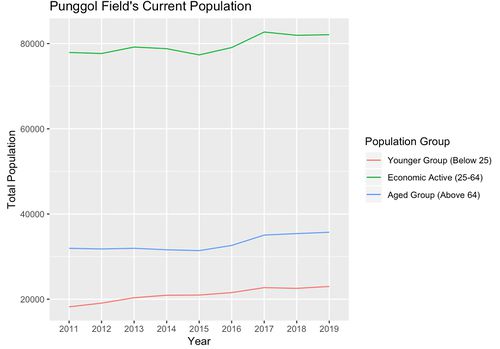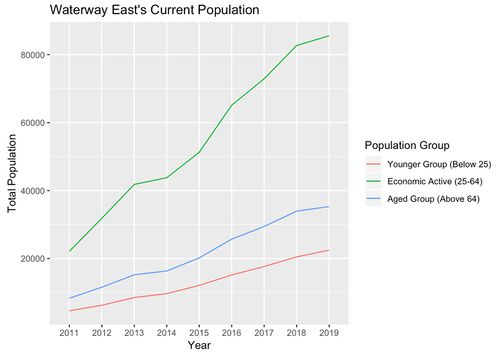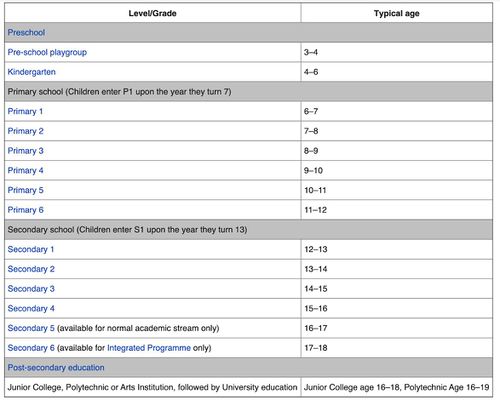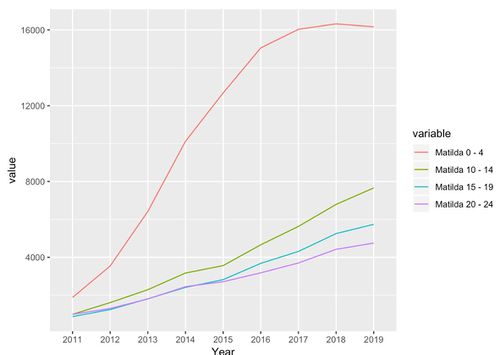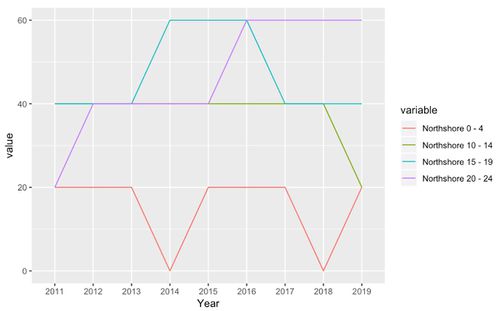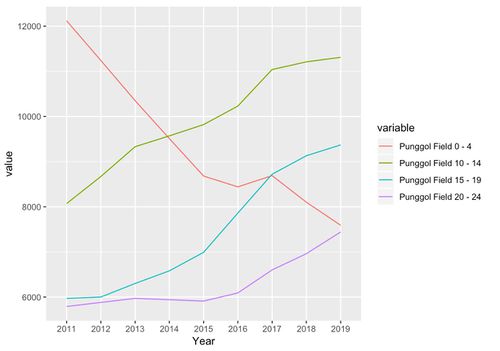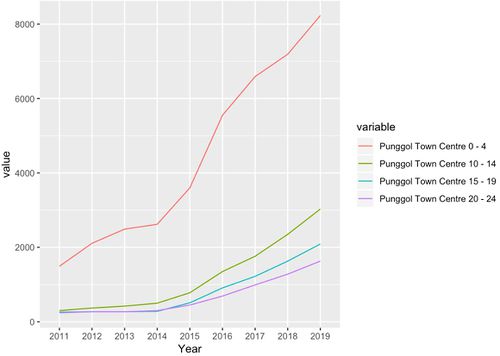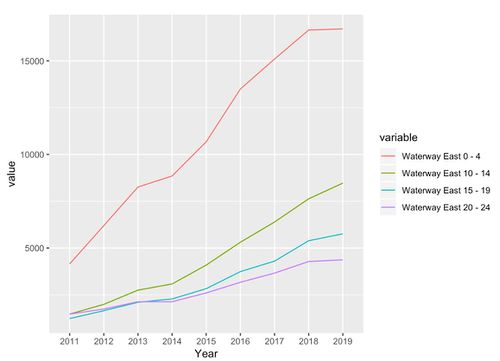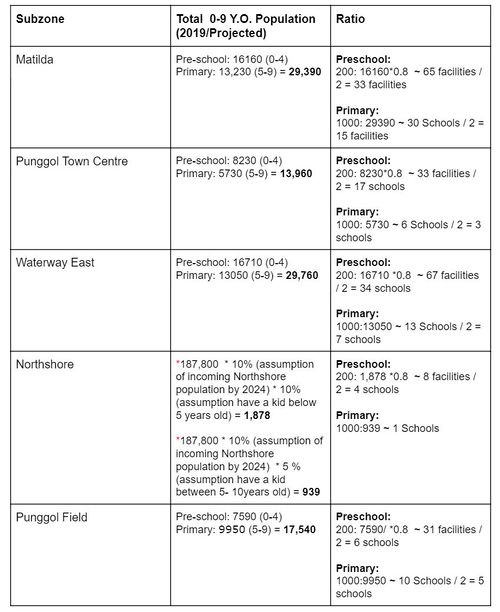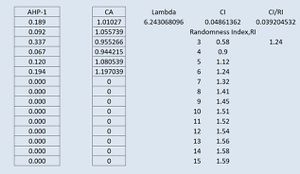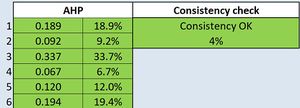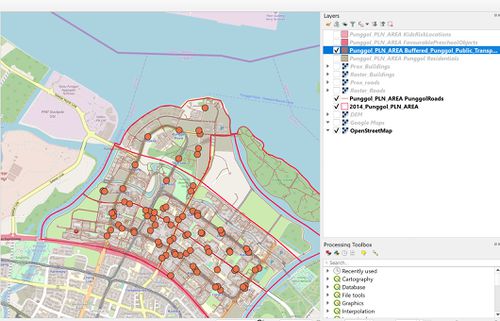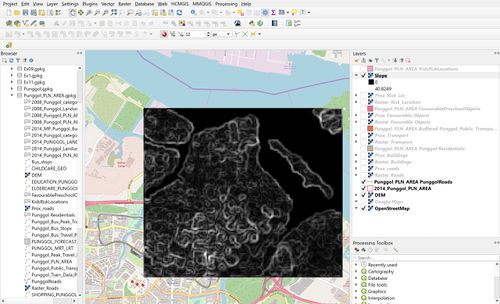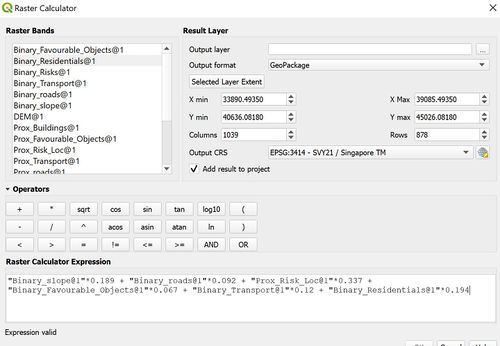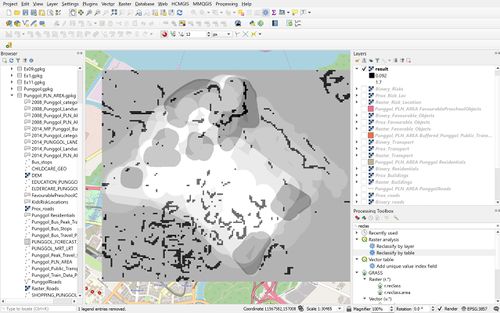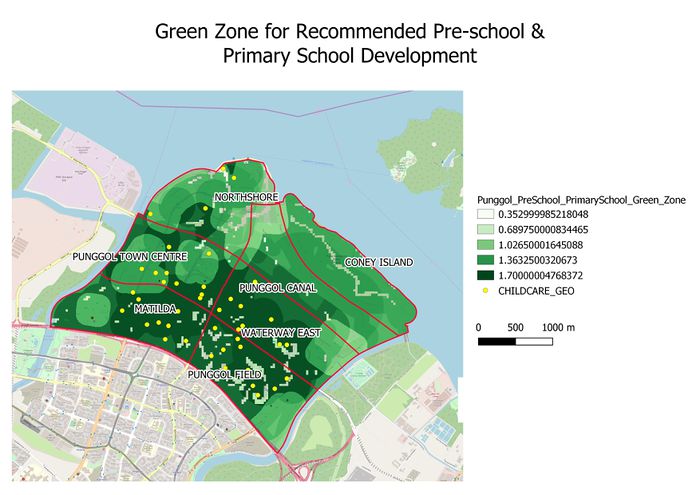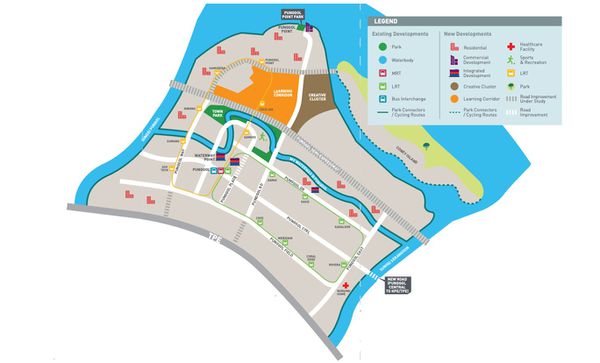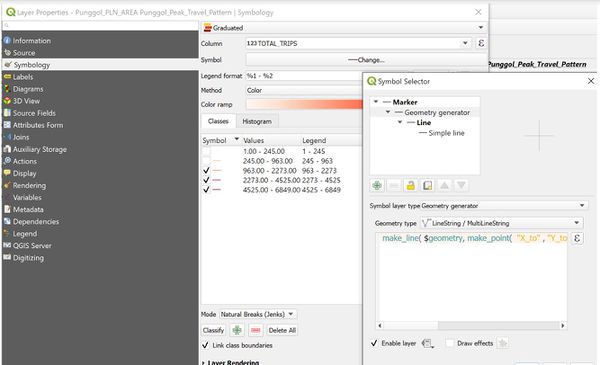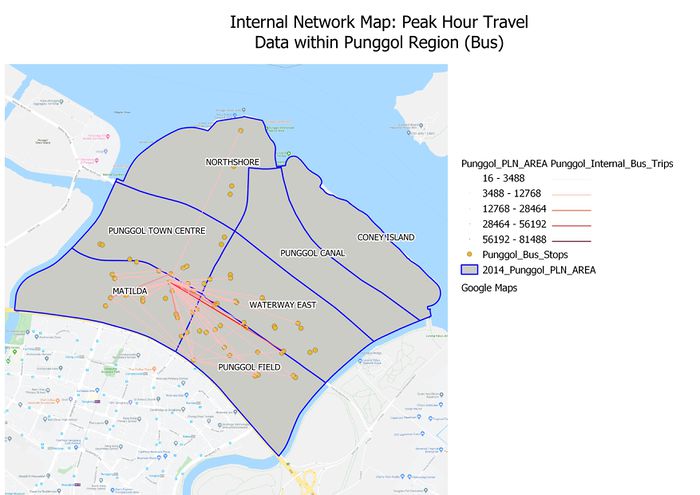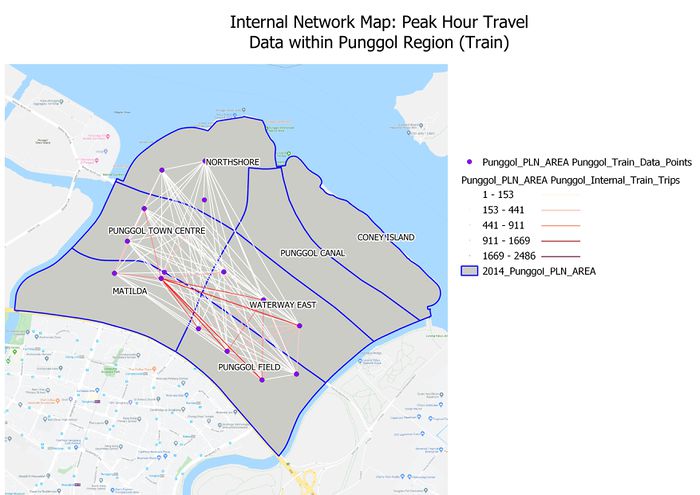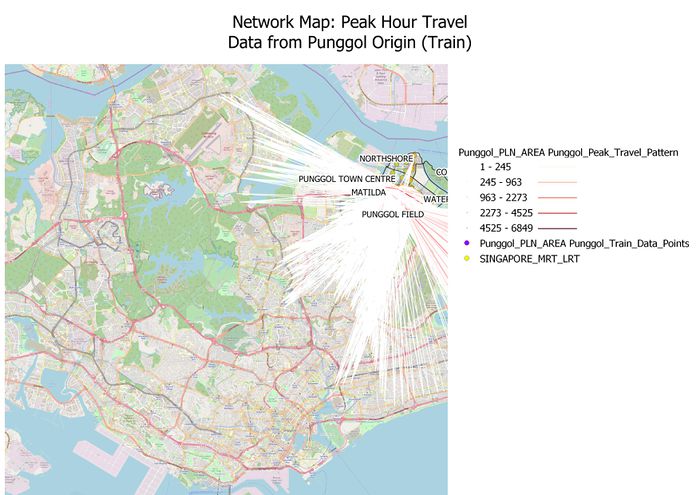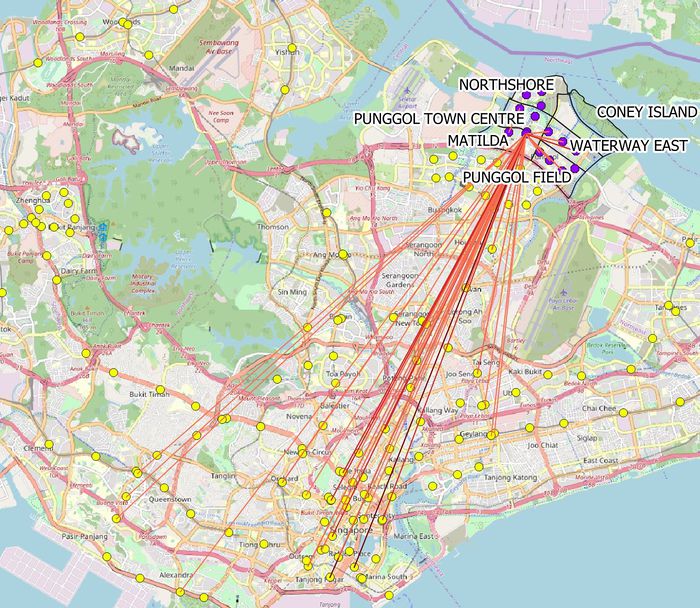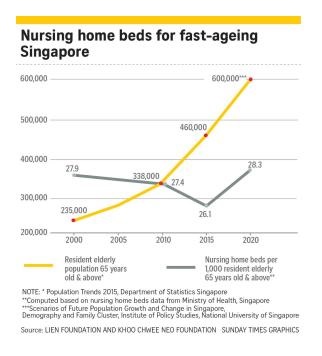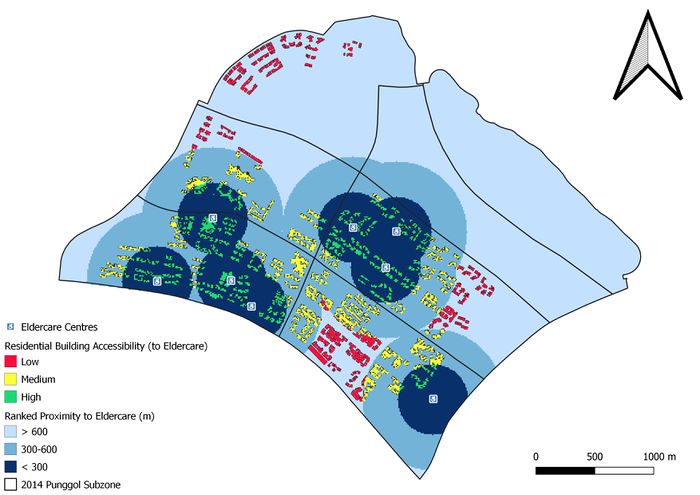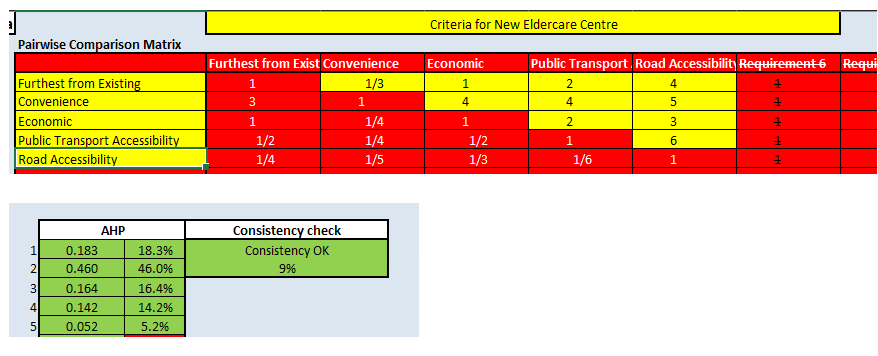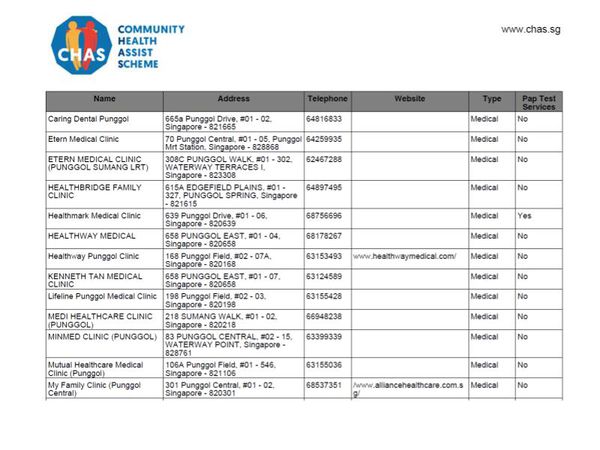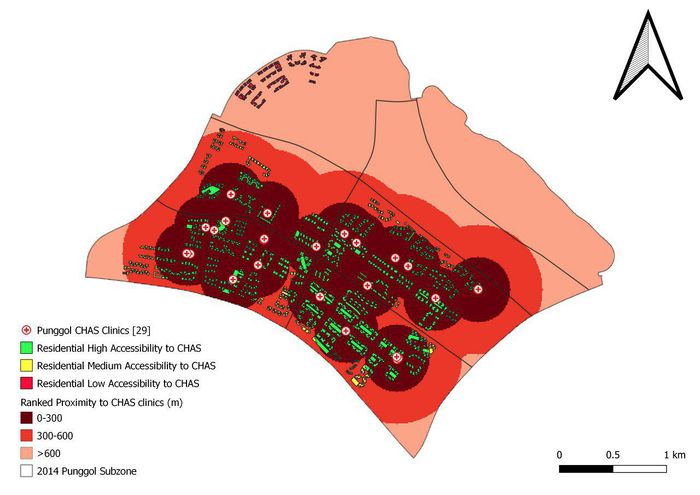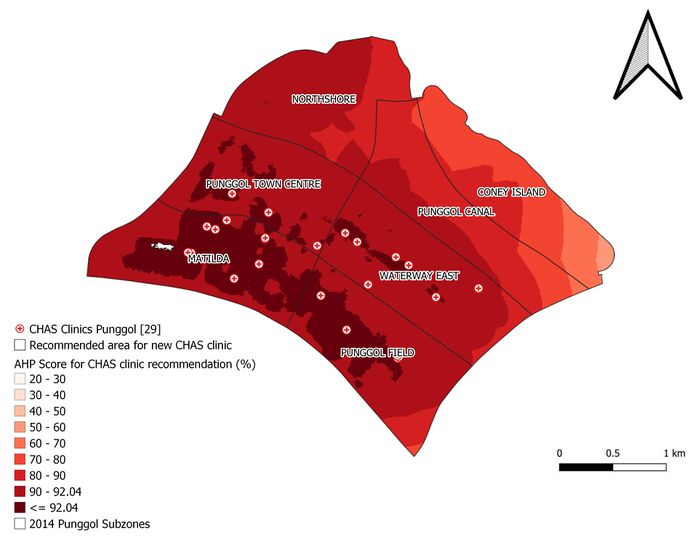G2-Group06 Analysis
Contents
- 1 Population Growth Trend & Forecast
- 1.1 Data Cleaning Methods
- 1.2 Visualisations
- 1.3 Results
- 1.3.1 Matilda’s Population Trend
- 1.3.2 Northshore’s Population Trend
- 1.3.3 Punggol Town Centre’s Population Trend
- 1.3.4 Punggol Field’s Population Trend
- 1.3.5 Waterway East’s Population Trend
- 1.3.6 *Coney Island and Punggol Canal have 0 population recorded so we are not going to focus on these particular subzones
- 1.4 Analysing The Younger Population’s Needs
- 1.4.1 Going deeper into analysing each younger age group education needs
- 1.4.2 Matilda’s Younger Group Population Trend
- 1.4.3 Northshore’s Younger Group Population Trend
- 1.4.4 Punggol Field’s Younger Group Population Trend
- 1.4.5 Punggol Town Centre’s Younger Group Population Trend
- 1.4.6 Waterway East’s Younger Group Population Trend
- 2 Land Suitability Analysis (Green Zone) For School Redevelopment
- 3 Why Creating a Live-Work-Play-Learn Community can be challenging especially for the economic active?
- 3.1 Data Wrangling
- 3.2 Data Source
- 3.3 Results: Bus Peak Hour Travel Pattern in Deriving Current Punggol Population’s Workplace
- 3.4 Results: Bus and Train Peak Hour Travel Pattern within Punggol Boundary
- 3.5 Results: Train Peak Hour Travel Pattern in Deriving Current Punggol Population’s Workplace
- 3.6 Analysis of the Bus and Train Peak Hour Travel Pattern in Deriving Current Punggol Population’s Workplace
- 4 Looking out for the elderly of Punggol
- 5 Polyclinic & CHAS Clinics in Punggol
Population Growth Trend & Forecast
In this population we will be using the Singstat’s `Singapore Residents by Planning AreaSubzone, Age Group, Sex and Type of Dwelling, June 2011-2019` data provided. There are few objectives that we want to understand from the population historical data:
- Understand the population trend for each subzone and age group classification (younger group, economic active group, and aged population) in order to facilitate basic necessities for each age group.
- Forecast the future population trend up to 2024 using the auto ARIMA model to re-evaluate the MP19.
- Interpreting the Arima model
- Similar application of ARIMA model in forecasting population trends:
- Zakria, Muhammad & Muhammad, Faqir. (2009). Forecasting the population of Pakistan using ARIMA models.. Agri. Sci. 46.
- Nyonyi, T and Mutongi, C. (2019). Prediction of total population in Togo using ARIMA models.
- Lin, Bin-Shan, et al. “Using ARIMA Models to Predict Prison Populations.” Journal of Quantitative Criminology, vol. 2, no. 3, 1986, pp. 251–264. JSTOR, www.jstor.org/stable/23365635.
- Make recommendations according to the population trend insights.
Data Cleaning Methods
- Data is cleaned to only show Punggol PA and its subzones.
- Age group were classified into a new group with the following requirement:
- Younger Population: 0-24
- Economic Active: 25-64
- Aged Population: 65 and above
- Summation group by was performed according to each subzone and age group classification.
- Reverse data frame vector was performed to swap rows and columns formatting as it is required to perform graph visualisation in R.
- Methods Deployed in RPubs: Punggol Forecast Population Analysis
- Methods Deployed in RPubs: Punggol Peak Hour Travel Pattern Analysis
Visualisations
- Datatable view of forecast population per age group classification and subzones.
- Plotting time series line graph on each subzone’s population trend.
- Plotting the ARIMA forecasted population on each Subzone.
Results
Matilda’s Population Trend
First, the Matilda subzone is one of the most populated subzones in Punggol. The Matilda subzone has been populated ever since the initiation of HDB buildings in Punggol. The subzone is continuously growing ever since 2011 for all age groups. Interestingly the subzone is predominantly filled with the economic active group. Based on the 9 years trend, an ARIMA (0,1,0) with random walk were applied to predict the population for the next 5 years. We predict that there is a major growth in population for this subzone. We anticipate the there is a growing number of younger age group as the economic active age group might plan to start a family.
Northshore’s Population Trend
Next, the Northshore subzone is rather a newer region in Punggol. We haven’t observed a significant rise in terms of population. However, there are on-going government plans of developing smart HDB in these regions for example the Punggol Northshore Residences I and II.
For the upcoming next five years or so, the number of populations might increase exponentially, especially with the attractive government’s plan for the smart HDB which in turn will probably attract most of the economic active group.
Ref: 1. https://www.straitstimes.com/sites/default/files/attachments/2019/04/22/ST_20190422_ITHOMEFINAL_4787163.pdf 2. https://esales.hdb.gov.sg/bp25/launch/19sep/bto/19SEPBTO_page_2671/about0.html#
Punggol Town Centre’s Population Trend
The Punggol Town Centre is located at the heart of Punggol planning area. This shows a major exponential growth. This exponential growth could have been caused by the past few year’s major development by the government, especially through the integrated development near Punggol MRT also the the new HDB appearance at the Nibong LRT proximity.
We are projecting that exponential growth will diminish as most of the region haven’t progressed much from previous Masterplan 2008 and Masterplan 2014. Additionally, most of the locations in the area are currently occupied or already planned. However, with the current figure of the economic active population there is a possibility that the younger group might still spike due to family plans and rather mid age group living in the area. We should not deny the potential addition of the aged population even though it might not rise significantly for the next 5 years, but however an early planning is always good to ensure that needs are always met, example: building eldery centres as this subzone currently has approximately 9000. We recommend a child centre built nearby homes as there are only a few in this region.
Punggol Field’s Population Trend
The Punggol Field subzone is rather been mostly an occupied zone since 2011 and growing at a rather consistent rate ever since. According to the change model analysis as described in the previous section. This area had mostly minor changes to an additional education institute and residential facilities. We are not projecting that there will be major changes in terms of figure, but there is a possibility that the aged group might rise about 4000 for the next 5 years, thus suggesting the need of more eldery facilities.
Waterway East’s Population Trend
Similar to Matilda and Punggol Town Centre, the Waterway East has one of the fastest growing subzones in Punggol. We can observe a similar trend of age group division, where the economic active dominates the population. In terms of its current figure, Waterway East have reached Punggol Field’s figure. However, when it comes to potential growth, we project that there will be an increased number of addition across all age group classifications.
*Coney Island and Punggol Canal have 0 population recorded so we are not going to focus on these particular subzones
Analysing The Younger Population’s Needs
Going deeper into analysing each younger age group education needs
In this section we will perform a micro analysis of the younger age group needs. The diagram above clearly separates different education stages of each young group classification. We will make recommendations whether there is a need to revise the current availability pre-school, kindergarten, primary school, secondary school, and post-secondary education.
Matilda’s Younger Group Population Trend
The above line chart depicts the historical younger group population trend in Matilda’s subzone. Interestingly the subzone are predominantly filled with age group 0 - 9 which emphasises the need of having preschool and primary school nearby residential buildings. Proximity to residentials are important in this subzone so that parents can drop or pick-up their kids before or after work conveniently. From this figure we can conclude that for the next 5 years, preschools, kindergarten and primary schools are priority.
Northshore’s Younger Group Population Trend
As per discussed under the “Northshore’s Population Trend” section, the government are rolling out HDB on-going projects that will be projected to complete in 4 or more years. Thus, even though the younger population figure seems to be less significant as compared to other subzones, the subzone will experience a major spike once units are completed. Thus, there is a need for proper planning to ensure that the younger age group needs are met.
Punggol Field’s Younger Group Population Trend
The Punggol Field’s subzone is rather different as compared to Matilda’s. Younger age group comprises of majority 10-19 years old which touches primary, secondary, and some post-secondary level of education. Despite the pretty big ratio of secondary and post-secondary figures, our team believes these planning facilities for these 2 stage of education should consider a higher level planning zone, for example across Punggol planning area instead of just subzone. As age group tend to be more independent, accessibility is not an issue as long as the number of supply meets the demand. Thus we are only prioritising the facility for primary school here.
Punggol Town Centre’s Younger Group Population Trend
The Punggol Town Centre have roughly consistent growth rate in terms of number per each group. Our team observes a pretty similar case to the Matilda’s Subzone where total population of 0-9 age group are way more than the other age groups. We will prioritise in building more preschools, kindergarten and primary schools for these age groups.
Waterway East’s Younger Group Population Trend
The Waterway East’s have also a roughly consistent dominant total of age group 0 - 9. Our team believes that this trend of dominant age group of 0 - 9 years old is not random, the fact that it has appeared to be distinctly apparent on 3 out of 5 occupied subzone. This trend also implies that most of current Punggol residents are young family and it is continuously adding. If we consider the current social norm in Singapore, newly married couples will tend to look for a new BTO as they venture out to a new phase of life together. Coupling with the recent BTO launches especially in the Northshore subzone, we expect the same pattern to happen again. Where it emphasis the need of more children facilities in the region.
As we focus on providing children facilities especially the education needs, we will roughly measure the approximate ratio of available educational facilities on each subzone, number of pre-school, kindergarten and pre-schools, and lastly the total of 0-9 age group.
Ref:
- “Punggol has an estimated HDB resident population of 187,800 and we manage 49,909 flats in the town (as of September 2019)”
- https://www.hdb.gov.sg/cs/infoweb/about-us/history/hdb-towns-your-home/punggol
- https://mothership.sg/2019/09/punggol-point-bto-september-2019/
Facilities to Cater for the Younger Population’s Needs:
- Mainly narrowed down in ensuring that school for 0-9 years old age group are all provided
- Building of new library looking at the trends of younger group rise:
- However its already planned. Punggol's library is currently being built and will be available in 2021.
Land Suitability Analysis (Green Zone) For School Redevelopment
In this section we will explore options in meeting the younger population needs especially in catering for the preschool and primary school needs as mentioned in the previous section. We note that there is a greater demand yet limited supply of schools in order to fulfill the Masterplan 2019’s vision of Punggol as a place to play-work-learn-live. Going back to the numbers, 5 out 7 subzones in Punggol are currently growing in terms of the number of population between 0 - 9 years old. Moreover, a further migration of the economic active especially the newly married couples through the recent purchase of BTOs will pose as an increase potential number of these age group.
The above map shows the currently available childcare centre and schools in Punggol retrieved from the Data.Gov site, shows a lack of supply for the demand to meet the current vision. Next, we will evaluate alternative recommendations that can be performed. We will apply a land suitability analysis to predict where in Punggol subzones can we add on the number of supply for this need.
For this land suitability, we will develop what we call a green zone to identify preferred locations with multi-weighted criterias with the following suggested factors:
- Economic factor: < =15deg slope for an ease of construction development which results in no additional time and manpower cost. Our team aims to look at the potential of building an integrated schools within pre-existing buildings, the reason is to leverage and optimise the use of empty & reserved land for something else. Thus, the slope standardisation method was not performed.
- Road Accessibility factor: <= 100m from roads for ease of private transportation.
- Children Risks Avoidance factor: >= 150m away from school as a highly important factor as parents would want to send their kids to a less risky locations with lesser construction areas.
- Favourable Objects Proximity factor: <= 500m from favourable objects for better outdoor learning possibilities such as empty fields, grass, playground, etc.
- Public Transport Accessibility factor: <= 200m from public transportation data points for convenience of majority population.
- Residential Proximity factor: <= 300m from residentials because we want to go back to the Masterplan 2019 vision to create Punggol as a place to play-work-learn-live.
We make use of the SAGA Analytical Hierarchical Process to simulate and ensure the consistency weightage based on what is a priority. The above picture shows the priority matrix we have plotted.
The current random index represents a consistent prioritisation matrix by weighing Economic factor as 18.9%, road accessibility factor as 9.2%, children risks avoidance factor as 33.7%, favourable Objects Proximity factor as 6.7%, public transport accessibility factor as 12%, and residential Proximity factor as 19.4%.
children risks avoidance, residential proximity factor, economic factor, public transport accessibility factor, road accessibility factor and favourable objects proximity factor in that order.
Methods Taken
- Binary land suitability modelling by using raster-based GIS operations in QGIS. By transforming export vector layers into raster layer for computation. Each layer attributes were added with a `POI_CODE` = 1 to represent the binary value.
- Catering to MRT/LRT stations and bus stops in Punggol, we apply buffering from the vector geometric tools of 50m dimension to represent its station reachability.
- Next, we perform `Rasterize (Vector to Raster)` to each `POI_CODE` function to convert into raster format.
- For each Rasterized vector, we generate a proximity analysis using the `Raster > Analysis > Proximity (Raster Distance)`.
- Ranking land suitability modelling of the generate raster-based layers, we perform the binary multiplication with the analysed weightage for each factor using the Raster Calculator.
- The binary model is generated, however we need to clip raster to fit the Punggol subzone using the `Clip Raster by Mask Layer` of the MP14 subzone boundary.
- Finally, we run `QGIS2Web` plug-in and deployed analysis app on the Heroku platform. The product can be found here.
Results
The above map shows the overall green zone suitability map for building new primary and preschool. The darker the green zone represents a more suitable location according to the weighted analysis.
Firstly, the Matilda, Punggol Town Centre, Punggol Field, and Waterway East has the most 0-9 age group population. However, the current figure of child centres and primary schools does not meet its tremendous demand. We can observe visually and count manual how many centres are there. This should be a priority that the government should prioritise because we are talking about ensuring about providing a good quality education for the future generations of Singapore. Between this 4 populated subzones most of the recommended locations are located at the heartbeat of Singapore which ensures the nearby proximity to community facilities, public transport, road network, and residentials.
The challenge now is that the recommended green zones are populated with buildings, thus no empty land to build.
Our team believes that this challenge can pose as an opportunity in embedding preschool under the HDB blocks and future new residentials as seen as the picture above. Additionally, as there is a high demand and low supply preschools in the Punggol region we can see the building of preschools as an open job opportunities for new teachers thus tackling Punggol as a place to play-work-learn-live.
Going back to the green zone land suitability analysis, the Northshore region will experience an exponential growth of economic active and the younger group age group with only 3 pre schools at the moment. The map above depicts the on-going Punggol redevelopment from Master Plan 2008. We can see that learners and creative corridors are being built nearby the subzone, that will most likely be the best place to plan the redevelopment of the facilities.
Data Sources
- Master Plan 2014 Subzone Boundary from URA. This data can be downloaded from data.gov.sg.
- Roads, buildings, land use data from OpenStreetMap (OSM) data sets.
- Child care layer from Data.gov.
- Bus stops and mrt data points from DataMall.
- ASTER Global Digital Elevation Model (GDEM) dataset jointly prepared by NASA and METI, Japan. This data can be downloaded from NASA’s EarthData Search site.
Why Creating a Live-Work-Play-Learn Community can be challenging especially for the economic active?
Ever since the Masterplan 2008, Singapore envisions its planning subzones to be a place to live, play, work. Under the Draft Master Plan 2019 itself states that “Punggol Digital District will continue to provide jobs closer to home”. However can we evaluate whether this plan is applicable for the economic active age group?
Firstly, the Punggol Digital District (PDD) aims to bring together the Singapore Institute of Technology (SIT)’s campus and JTC’s Business Park spaces within Punggol North to create Singapore’s first truly smart district. Thus, potentially creating new opportunities for Punggol citizens and their surroundings. We will review the current possibilities and challenges of the current initiative, especially how likely it is to bring work closer to home.
To understand its possibilities it is important to perform analysis to understand where does most of the Punggol economic active group works. The explicit data for this case will be extremely hard to access, however we can imply that most citizens will travel to how using public transportation. The DataMall API provided by LTA summarises the monthly travel patterns by origin destinations to each train’s station and bus stops. Additionally, if we could gather both travel pattern data during AM & PM peak hour, we can probably capture most of the traveling to work trips.
Data Wrangling
Our assumption will be that AM peak hour is between 8 to 10 am interval. While PM peak hour takes time at 6 to 8 pm. Based on the row screenshot of the raw data shown above, we can potentially filter time based on the peak hour timing on weekday and match train stations and bus stops to gather information of total trips which takes place during peak hour and punggol origin.
Data Cleaning and filtering were performed in R and published in RPubs Punggol Peak Hour Travel Pattern Analysis. During the data cleaning process, we realised that MRT/LRT transfer stations such as Punggol, City hall, and Dhoby Ghaut had a special combined station code, thus we will only take the first mentioned station by default for data matching during analysis, eg: Punggol MRT was listed as “NE17-PTC”, R code transforms it into “NE17”. Also, the bus stop numbers which has a default 6 digits character was read as a digit thus losing its first “0” digit as it was converted into digit.
The MRT/LRT and bus stop vectors were exported in to geopackage. Since we are focusing on travel patterns from Punggol origin, we filter overall data points which falls under the Punggol Region using the clip method. Next we label the coordinate using X & Y geometry through adding new field using the Field Calculator feature. Syntax used was as simple as calling a built-in function that returns X & Y coordinates which are `$x` and `$y`. Next, we also label the entire MRT/LRT stations and bus stops. It is not possible to have 2 vector data points in a single row of data, thus we leverage on the `X_from` `Y_from` and `X_to` and `Y_to` when performing joining according to the appropriate `ORIGIN_PT_CODE` and `DESTINATION_PT_CODE`.
Next, we perform a one-to-many relational data joining of the “Passenger Volume by Origin Destination Bus Stops” and “Passenger Volume by Origin Destination Train Stations” using the Vector general’s `Join attributes by field value`, where input layer as the clean travel pattern data and second input layer as the vector point with the newly created X Y field. Next step uses the same method but linking bus destination all overall singapore travel data points, thus having 2 points of vector data in a row.
In order to visualise, we export current data into a csv, to vectorise according to the joined X Y data points by importing as delimited layer file. Importing the delimited text layer will point to the `X_from` and `Y_from`. We want to build a graduated network layer between to vector points using the graduated and customised geometry option. To do that we did the following steps:
- Open imported layer’s symbology setting
- Choose `Graduated`
- Click `Symbol` > `symbol layer type` as `Geometry Generator` and `Geometry type` as `Line String/Multiline string`
- We manually plot the `X_to` and `Y_to` data point by indicating geometry expression with the following formula: “ make_line( $geometry, make_point( "X_to" , "Y_to" ))
- Next, we `Apply` changes and select `TOTAL_TRIPS` and the object of graduated value visualisation.
The above screenshot shows the created network layer based on the travel pattern data of public transportation. Next, we will analyse the results of the network map.
Data Source
- [[ http://datamall2.mytransport.sg/ltaodataservice/PV/ODBus%7C“PASSENGER VOLUME BY ORIGIN DESTINATION BUS STOPS”]] , Month Sep 2019.
- “PASSENGER VOLUME BY ORIGIN DESTINATION TRAIN STATIONS”, Month Sep 2019,
- Train data points, DataMall
- , DataMall
- DataMall API.
Results: Bus Peak Hour Travel Pattern in Deriving Current Punggol Population’s Workplace
Results: Bus and Train Peak Hour Travel Pattern within Punggol Boundary
Results: Train Peak Hour Travel Pattern in Deriving Current Punggol Population’s Workplace
Analysis of the Bus and Train Peak Hour Travel Pattern in Deriving Current Punggol Population’s Workplace
Based on the network analysis we have performed, we note that apparently most of Punggol citizens travel out of Punggol during peak hour. Firstly the Train Network map shows a rather spreading travel pattern out of Punggol all the way to Woodlands, Bishan, Ang Mo Kio, and the East Region, Interestingly, when we unview a rather small travel trips to of 1-963 in month September 2019, map revealed that many travel patterns are directed to the Buona Vista, One North, Labrador Park, Pasir Panjang, Paya Lebar, MacPherson, Tai Seng and of course CBD district including Tanjong Pagar, Downtown, Suntec, Promenade, City hall where most of the Big MNCs and well-performing startups and SMEs are currently located.
Additionally, from the predominant bus travel data during peak hour, we can see that interestingly bus trips to the east including Changi Airport and Expo are directed to. It is believed that these 2 locations also provides the aviation industry sector and technology support for big companies such as IBM and DBS tech division and located at Expo.
To conclude this observation, I believe that the goal of creating Punggol Digital District can pose a challenge not just in terms of initiating the vision, but also getting on board companies who are willing to move over to the Punggol region where it is not really well-known as an office area. Looking from the Punggol citizen’s perspective, Singapore ease of transportation allows them to travel down to popular business districts pretty conveniently and thus citizens might not feel it is necessary to work within proximity. Truth is , people don’t mind travelling just to be employed in a company they like. Next, global MNCs which most people prefer to work offers better competitive benefits and salary which in turn becomes the preferable place to work instead of just proximity as a priority.
Looking out for the elderly of Punggol
Background Research
Singapore is suffering from a silver tsunami, where more citizens are entering their golden ages. Nearly half a million people in Singapore are 65 and older today and their numbers are set to double by 2030 (Tai & Chuan, 2016). Years later, Punggol will too see a growing number of elderly. As such, there is a strong need for more eldercare to accommodate future generations of elderly.
To determine the location of eldercare in Punggol, we did a simple google search and drew up a list of centres. We extracted the name, address and postal code of each centre and added the geopoints to a new layer.
We then charted a proximity map from the eldercare to residential flats and houses. To determine accessibility, we took into consideration that an average elderly will take 8.5 minutes to walk 300m, and classified this distance as highly accessible. For the next 300m, the eldercare would have medium accessibility and beyond 600m, the eldercare would be considered centres with low accessibility. We also classified the residential buildings according to its distance from the next nearest eldercare.
From our results, we can see that there are still multiple red residential areas that are too far away from eldercare centres. In this aspect, we propose building just one more eldercare be built to serve the unserved residents. To do so, we conducted a land suitability analysis.
Land Suitability Analysis
First, we considered these factors when finding out which land is most suitable:
- Residential Convenience
The eldercare centres should be as close as possible to residential places. This allows for elderly to visit these nearby eldercare centres and allow for their family members to worry less since the facility is so accessible. The favourable distance is within 300m radius.
- Distance from existing centres
This ensures that the newly built centre overlaps least with the current areas that are already served. A favourable distance is beyond 600m of existing centres.
- Economic Factor
To ensure that it is inexpensive and easier for contractors to build the new eldercare, the slope of the land was taken into consideration. A ground with lower slope (< 15°) is favoured. This also ensures that construction periods do not overrun and disrupt residents’ quality of living, especially when it is densely populated at Punggol.
- Accessibility to Bus Stops
In the case where the eldercare has medium accessibility for someone, public transport becomes the alternative where the elderly can independently take safe rides to and from the eldercare. Hence, the eldercare centre should be closely located to bus stops.
- Accessibility to Roads
In the case where a family wants to send the elderly to the centre via car, eldercare centres should be placed by the roadside to decrease the time needed for families to send the elderly. Moreover, allowing the eldercare centre to have a roadside view can provide a more inclusive environment rather than a deserted one, making the elder residents’ feel less excluded.
Since not all factors have equal importance, we weighed the factors against one another to determine the consistency weightage of each factor using the SAGA Analytical Hierarchical Process.
As shown, the weightage for the factors are:
Residential Convenience = 0.460
Distance from existing centres = 0.183
Economic Factor = 0.164
Public Transport Accessibility (Accessibility to Bus Stops) = 0.142
Road Accessibility = 0.052
The order of priority is thus determined - the higher the weightage, the higher the priority.
After weighing them, we multiple the score by 100 and resulted with a raster layer of values ranging from 20 - 90. Setting a threshold of 85, we obtained 3 plots of land with an area of at least 10,000m2. From there, we decided to select the area that is within residential blocks.
The recommended area is given as shown in the white space within Northshore subzone. There is a severe lack of eldercare centre there and despite the rising population of the economically active and the young, a new eldercare centre in Northshore can help to prepare for the future population.
Conclusion
In order that Punggol may become a place where all can work, live, learn and play, Punggol must first be equipped with relevant facilities that can support the growing population. With more available facilities, residents can avoid worrying about where their elder family members can spend their afternoons at and will increase the overall quality of living.
Polyclinic & CHAS Clinics in Punggol
Background Research
Given that the overall population of Punggol will continue to rise and that more people will move in to reside in the new district, Punggol has to provide healthcare facilities in order to ensure good and affordable healthcare for the residents.
From the burgeoning economically active group, we might see a bigger number of them starting a new family and more younger populations seeking to get their healthcare needs met. This has inspired the opening of the Punggol Polyclinic in 2017 with the focus on women’s and children’s health services, whereby 11% of Punggol residents are children aged four and under in 2017, the highest proportion of children aged four and below in Singapore.
Although there is only one polyclinic in Punggol, it is backed up by the numerous CHAS clinics which are private clinics that offer the Community Health Assistance Scheme (CHAS). There is also no hospital in Punggol but the clinics in Punggol are working closely with the Sengkang General and Community Hospitals.
To determine the location of clinics in Punggol, we first looked up CHAS Clinic Locators online because we want to know where the family-oriented and affordable clinics are. We searched by the keyword `Punggol` and downloaded our search results.
From there, we extracted all the information into a proper excel sheet. We had to add an extra column for Country so that we were able to geocode the addresses.
After geocoding, we realized not all the locations were geocoded correctly. This could happen when the Web Service Geocode do not have the proper x y coordinates. The point features were then manually shifted, and checked against google maps.
Next, we did a ranked proximity map of the CHAS clinics and categorize the residential buildings according to their proximity to the CHAS clinics in Punggol to find out whether residents have high accessibility to healthcare facilities.
Land Suitability Analysis
We considered the following factors:
- Accessibility factor
- The new CHAS clinic needs to be accessible and inclusive so it’s better for it to be near footway and service roads, which we quantify as less than or equal to 200m
- The stated roads are extracted from the OSM roads layer which contains various types of roads
- Pollution factor
- The new CHAS clinic also needs to be away from the vehicle emissions, and most of the vehicle will travel along the primary and secondary roads
- The stated roads are extracted from the OSM roads layer which contains various types of roads
- Public transport accessibility factor
- For people staying outside Punggol, we need to make the new CHAS clinic travel-friendly and thus build it in close proximity to the MRT or LRT
- We want the clinic to be within 200m of the nearest MRT or LRT
- Hospital proximity factor
- Since Punggol has no hospital currently, the clinic might not be able to handle high-level medical surgery or treatments and in case of emergencies, it’s good to have the clinic in close proximity to a hospital outside Punggol
- The new CHAS clinics needs to be in the range of 1 km to the nearest hospitals
- Residential proximity factor
- The new CHAS clinics also needs to be relatively close to residential areas because it’s built to serve the residents so we cannot have it faraway from the residential areas even though it is near the MRT or LRT
- It needs to be within 500m of residential areas
After reclassifying the table for the layers stated above, different layers must have different scale so we standardized the value using the min-max method.
We use SAGA’s Analytical Hierarchical Process to rank the importance of the factors relevant to the building of new CHAS clinic to get the weights of each factor.
So the final raster calculation (in percentage) according to the weights:
(( "Standardized_footwayroad_proximity @1" * 0.294) + ( "Standardized_primaryroads_proximity@1" * 0.054) + ( "Standardized_MRTandLRT_proximity@1" * 0.114 ) + ( "Standardized_hospital_proximity@1" * 0.116 ) + ( "Standardized_residential_proximity@1" * 0.422 ) )*100
As shown, the weightage for the factors are based on the highest priority are: Residential proximity = 0.422 Footway accessibility = 0.294 Hospital proximity = 0.116 Public transport proximity = 0.114 Pollution =0.054
The AHP gives us several plots of land ranging from 100m2 to above 10000 m2, since the clinic does not need to occupy such a large space and because Punggol is now currently undergoing development, we chose a plot of land that is approximately 8000m2 in the Matilda subzone because it has the fastest-growing population and is the closest to the hospitals in Sengkang area.
Conclusion
Future works might be developed in the Northshore area which is going to house the Punggol Digital District (PDD) but looking at the population growth now, it is not suitable to house the new CHAS clinic and will be more beneficial if located in Matilda even though Matilda has the highest number of CHAS clinic. In the future, hospitals might also need to be built in Punggol to accommodate the growing economically active group.
